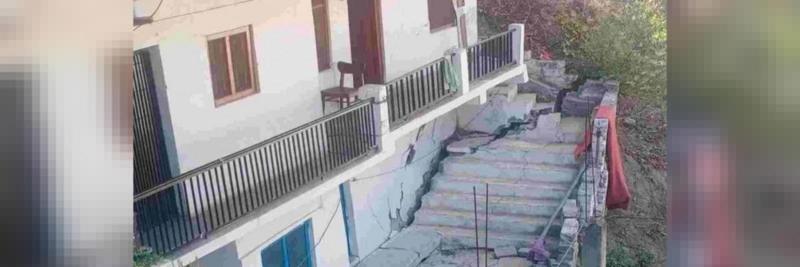Welcome to an eye-opening exploration into the concerning issue of land subsidence in the picturesque town of Joshimath. Join me as we uncover the reasons behind the sinking land and the extensive damage it has caused. Additionally, we will delve into the expert committee's recommendations for sustainable reconstruction and the imperative need to address this crucial issue.
Causes of Land Subsidence in Joshimath
Unraveling the underlying causes that have triggered land subsidence in the Himalayan town of Joshimath.
Josimath, adorned with its breathtaking views, holds a troubling secret beneath its surface. The root causes behind the land subsidence phenomenon in this picturesque town are multi-fold and require our immediate attention.
A combination of factors including the excessive construction beyond permissible limits, inadequate drainage system, deforestation, and disruptions to natural water sources, have all played a significant role in the occurrence of land subsidence. The delicate balance that once existed has been disrupted, leading to severe consequences for the community.
The unstable ground conditions in Joshimath, primarily due to the presence of moraine, have rendered it prone to sinking. This delicate mixture of unconsolidated debris has significantly contributed to the rapid subsidence.
Assessment of Damage and Costly Consequence
Unveiling the extent of damage caused by land subsidence and the staggering financial implications of recovery efforts.
In the wake of the land subsidence event earlier this year, a comprehensive assessment conducted by experts paints a vivid picture of the extent and cost of the damage inflicted upon Joshimath.
Over 65% of the town's houses, amounting to a staggering 1,403 houses out of the total 2,152, have been tragically impacted by land subsidence. The damages have amounted to a whopping Rs 565 crore, leaving homeowners devastated and in need of urgent assistance.
The experts estimate that 20% of the houses are now unusable, with an additional 42% requiring further valuations. Approximately 37% of the houses can still be used, albeit with caution, while a mere 1% are deemed worthy of demolition.
Long-Term Recovery and Sustainable Reconstruction
Understanding the imperative need for sustainable reconstruction and embracing a greener approach for a resilient future.
To navigate a brighter future for Joshimath, a national committee of experts spearheaded by the National Disaster Management Authority (NDMA) has put forward proactive measures that demand our immediate attention.
The first crucial suggestion is declaring Joshimath as a 'No New Construction Zone'. It is essential to rethink the prevailing principles of town planning in the Himalayan region and deviate from uninhibited construction. Embracing eco-friendly, green building practices fortified with appropriate technologies should be our compass towards recovery.
Recognizing that Joshimath's fragile ecosystem rests atop moraine, it is now imperative to create a robust drainage system and bring life back to natural water sources. This will not only enhance sustainability but also strengthen the overall resilience of the town.
Conclusion
The land subsidence issue in Joshimath serves as a stern wake-up call, highlighting the dire consequences of unrestricted construction, inadequate infrastructure, and ecological imbalance. However, by embracing sustainable reconstruction practices and prioritizing the preservation of natural resources, we can mitigate further damage and proactively build a resilient future for Joshimath.
FQA :
Q: How did the overcrowding of the town contribute to land subsidence?
A: The increase in the permanent population in Joshimath has added pressure to the delicate infrastructure. The rapid expansion is worrisome and has further exacerbated the effects of land subsidence, adding to the urgency of addressing this situation immediately.
Q: What are the key recommendations put forth by the expert committee?
A: The expert committee has advised declaring the area as a 'No New Construction Zone' and implementing green building practices with the use of appropriate technologies. Additionally, prioritizing the creation of a robust drainage system and rejuvenating the natural water sources have been recommended.
Q: What is the estimated cost of reconstruction in Joshimath?
A: The report estimates the total cost of reconstruction to be Rs 422 crore, highlighting the scale of resources required to restore and rebuild the town affected by the land subsidence.

